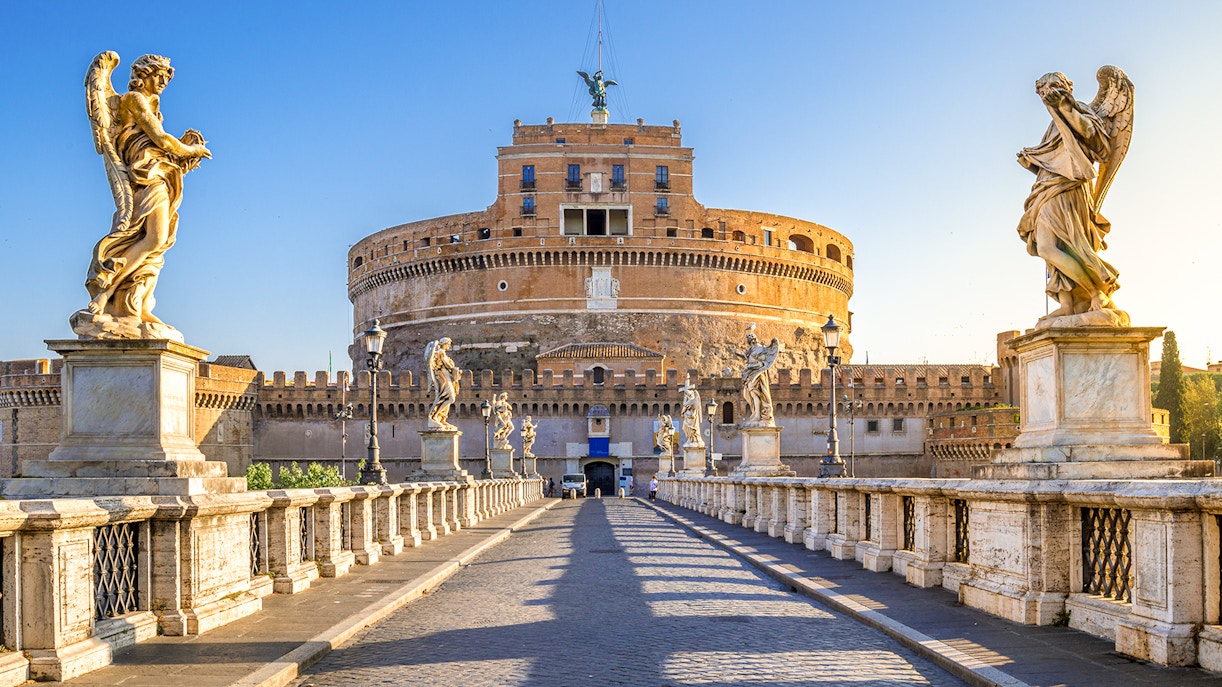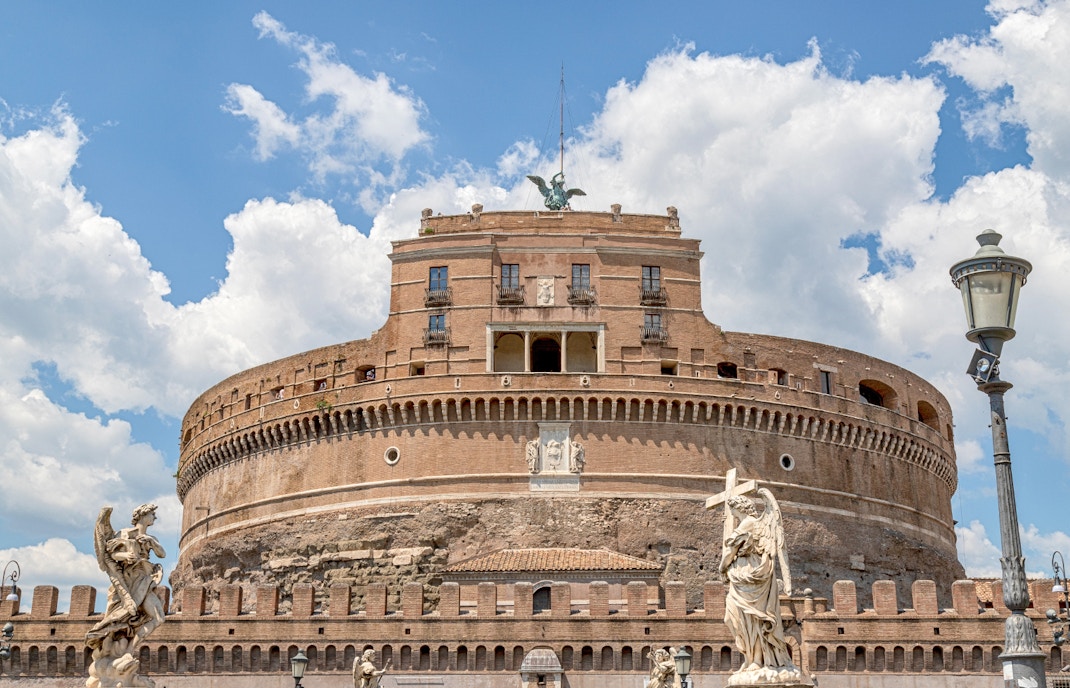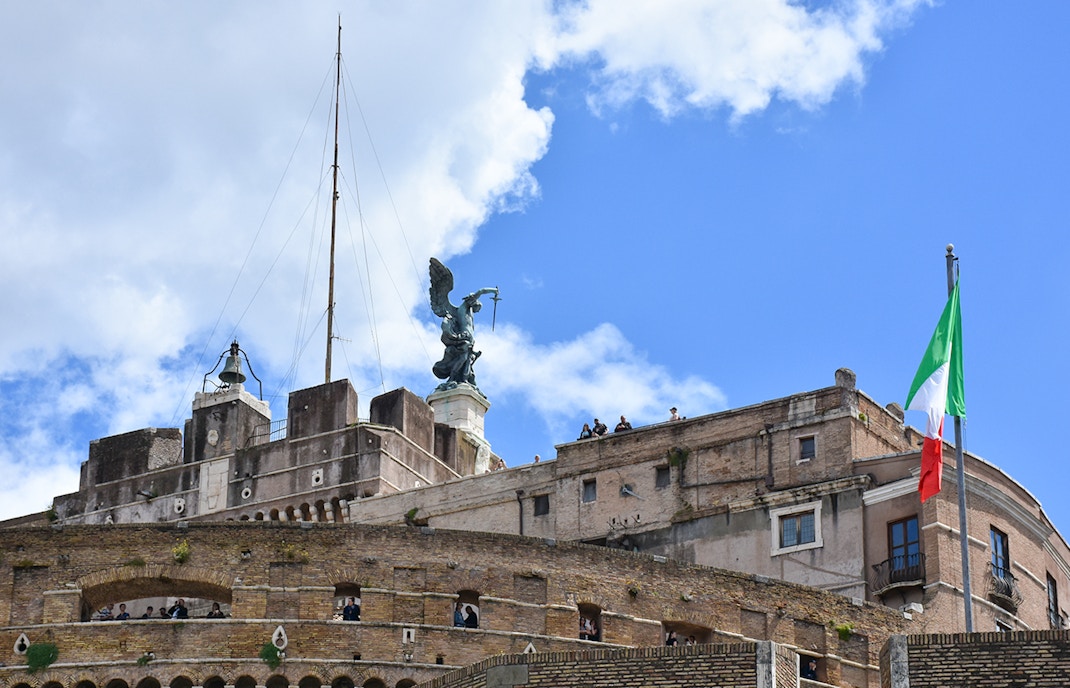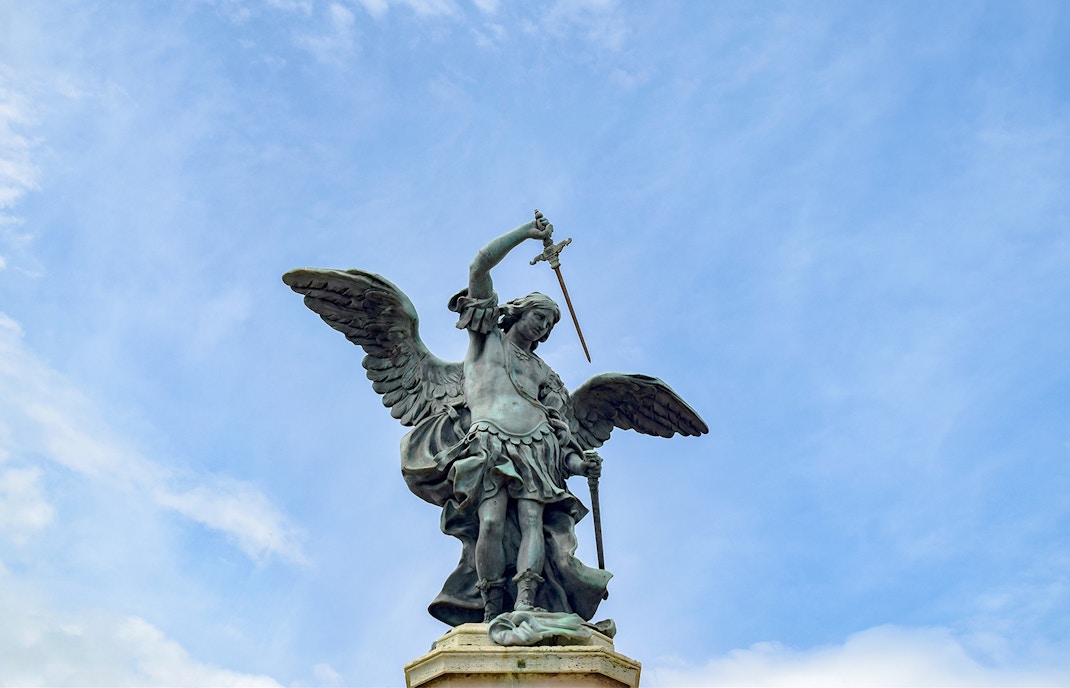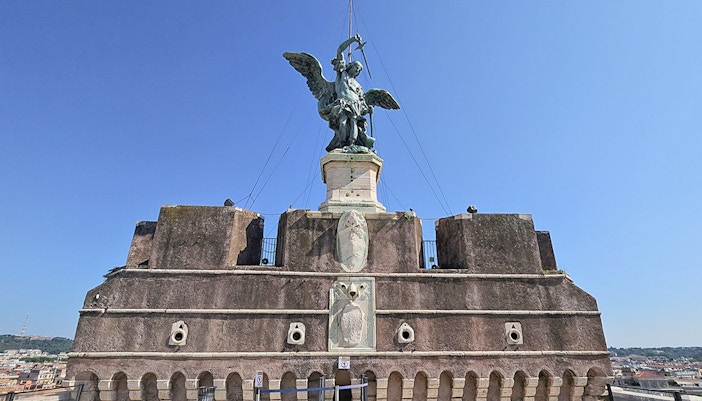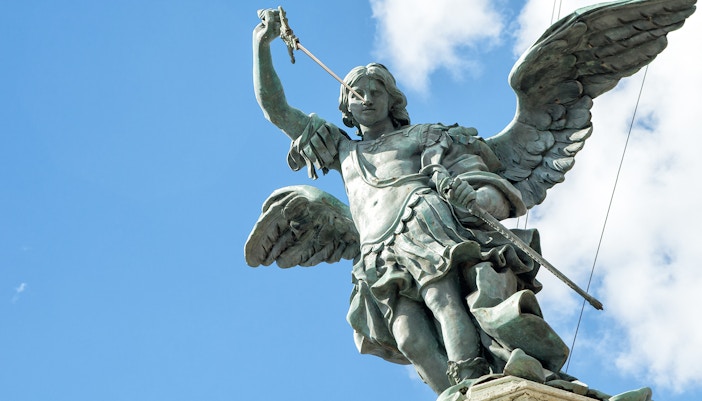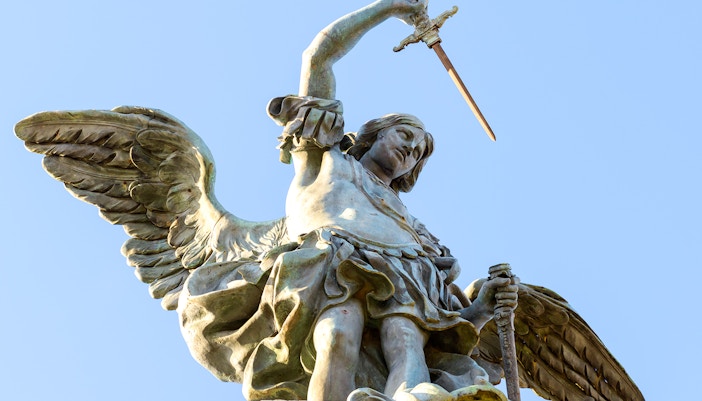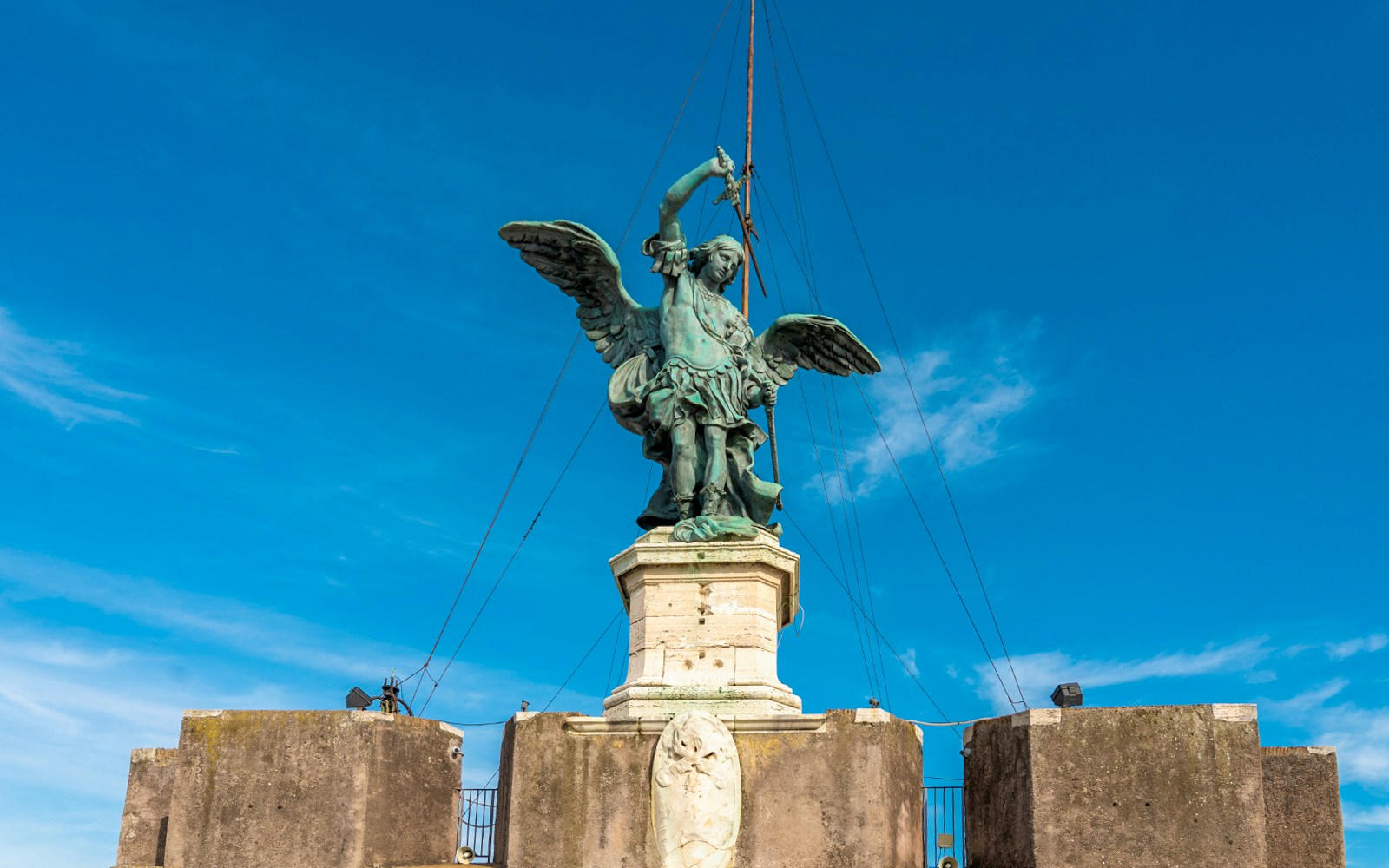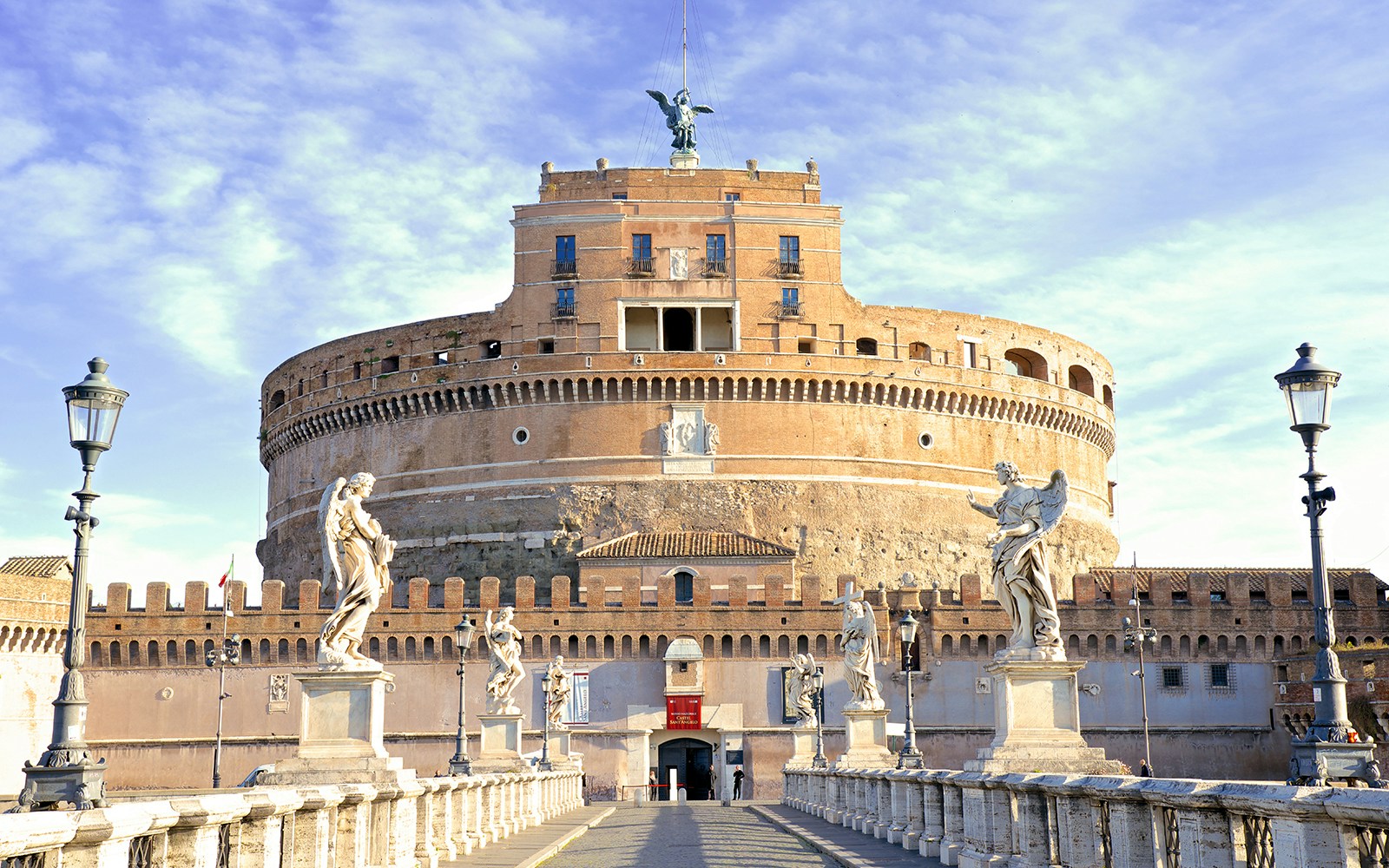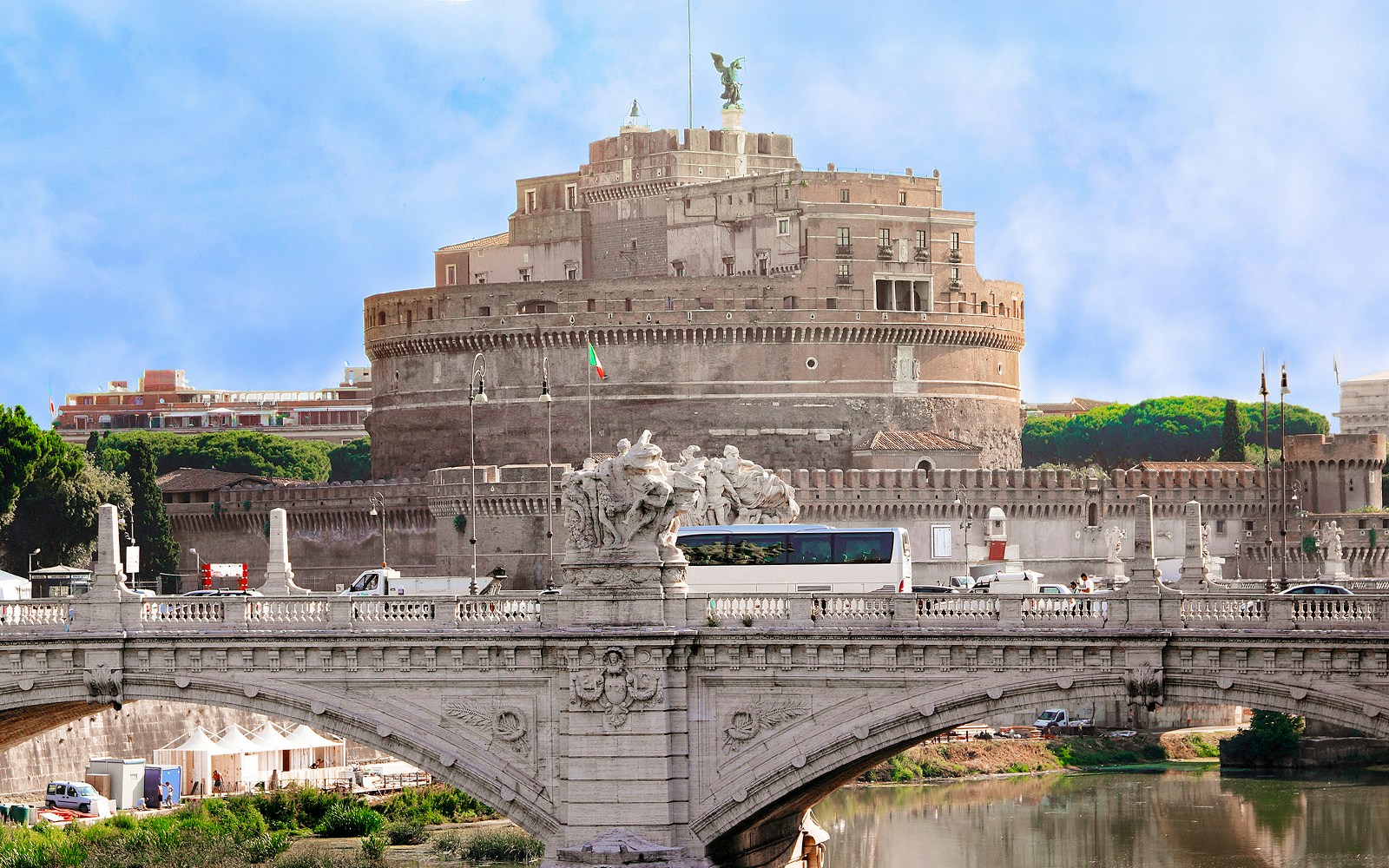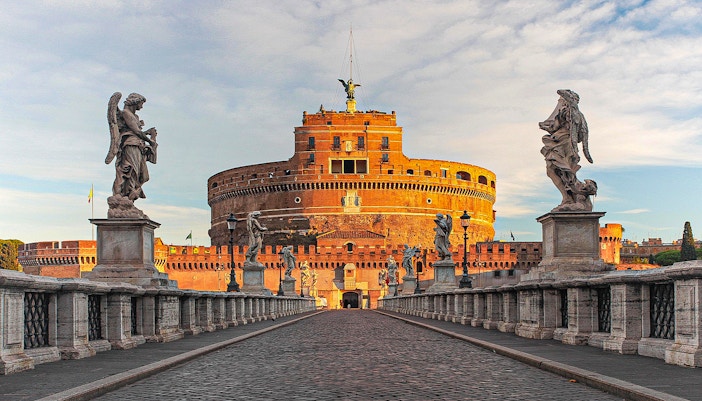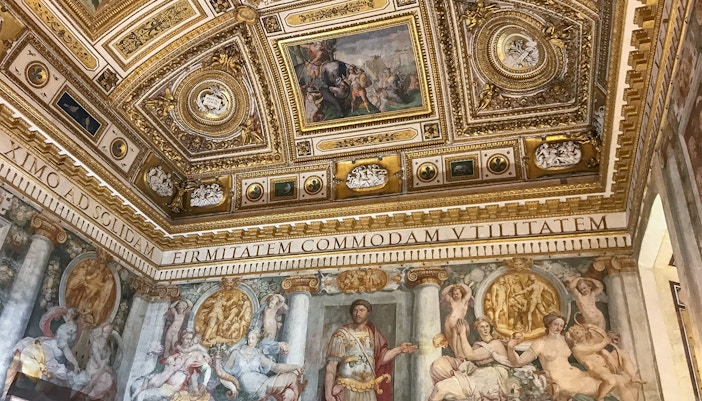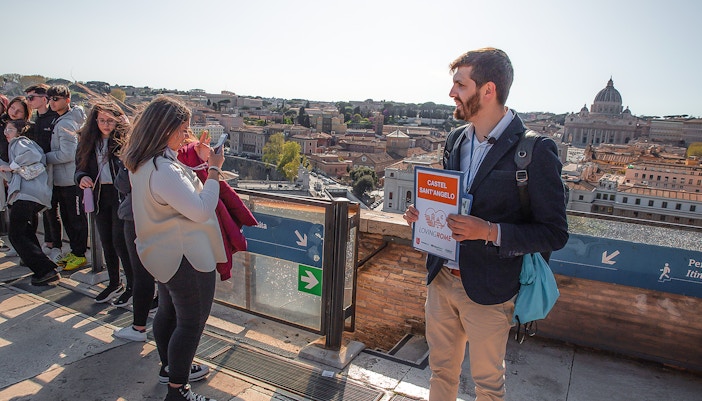The statue of the Archangel Michael stands at the summit of Castel Sant’Angelo, positioned on the Terrazza dell’Angelo*. *Once a military stronghold, this upper terrace was originally designed as a defensive platform, complete with bastions offering a commanding 360-degree view over Rome. From here, soldiers could monitor the Tiber River, the Vatican, and the city's ancient streets, making it a critical lookout point in the fortress’s military past.
Today, the terrace marks the final and most dramatic stop on the Castel Sant’Angelo museum tour. Visitors who ascend through the fortress’s spiraling corridors are rewarded with sweeping views of Rome’s skyline, including St. Peter’s Basilica, the dome of the Pantheon, and the curve of the Tiber River below.
